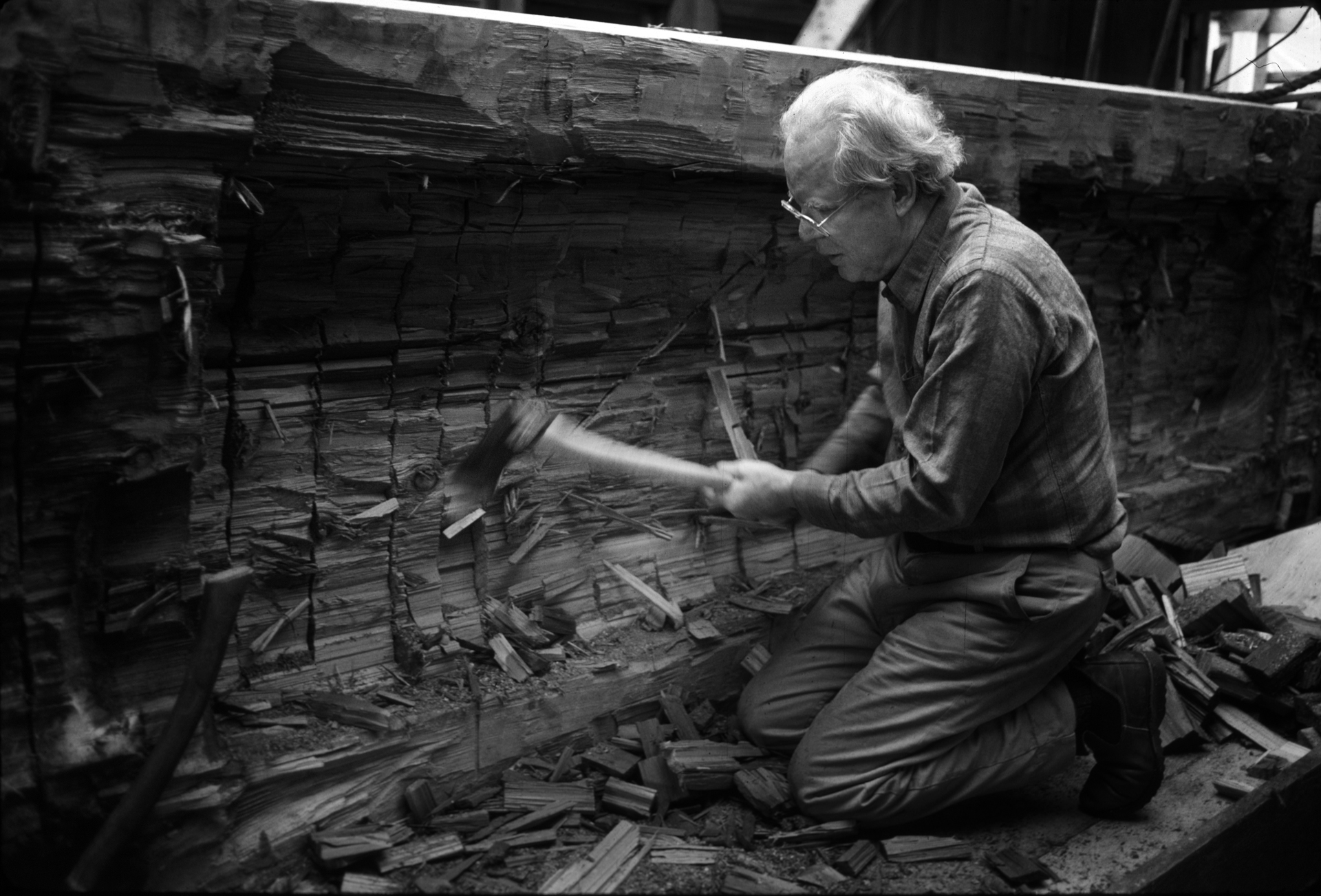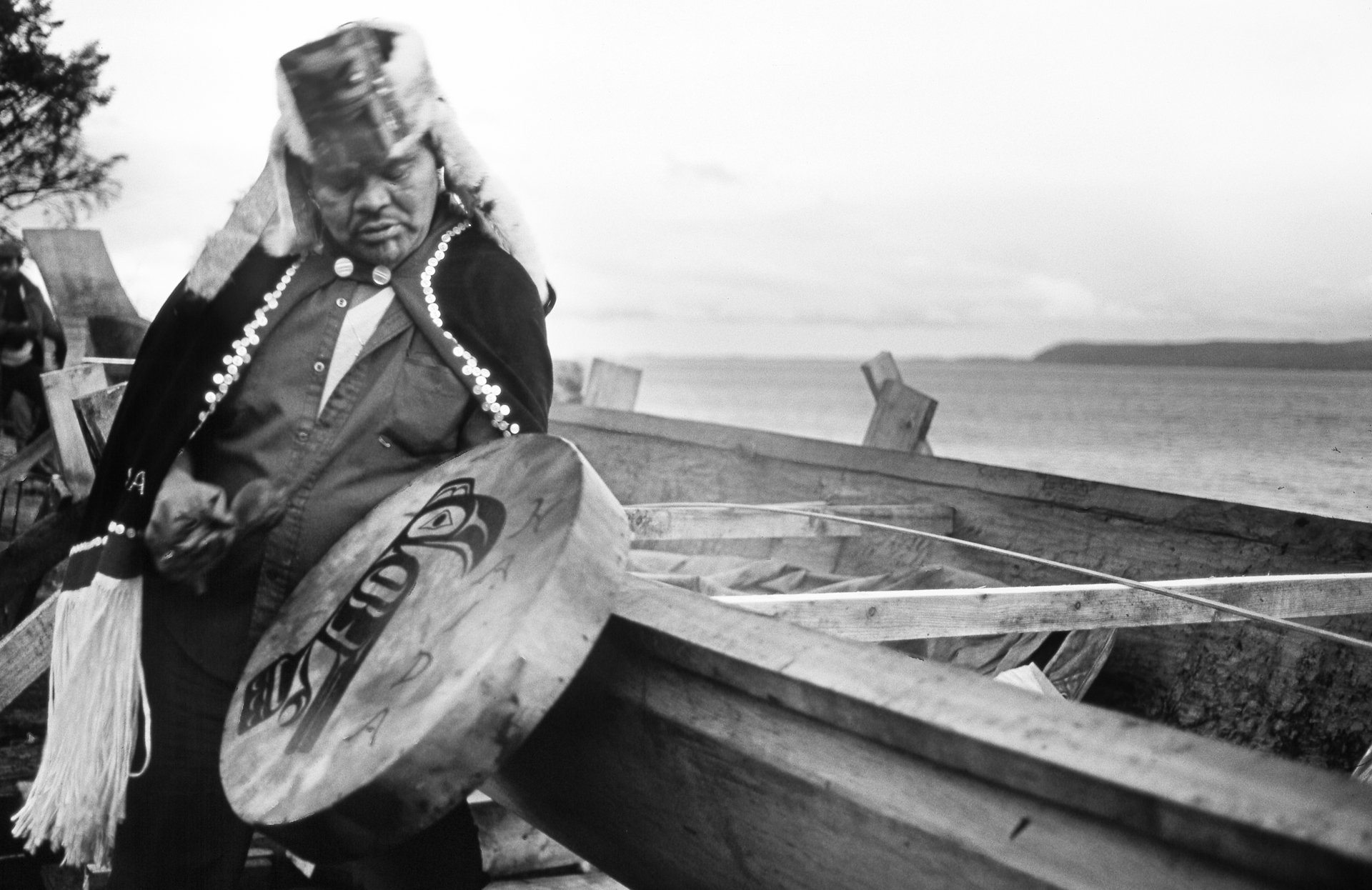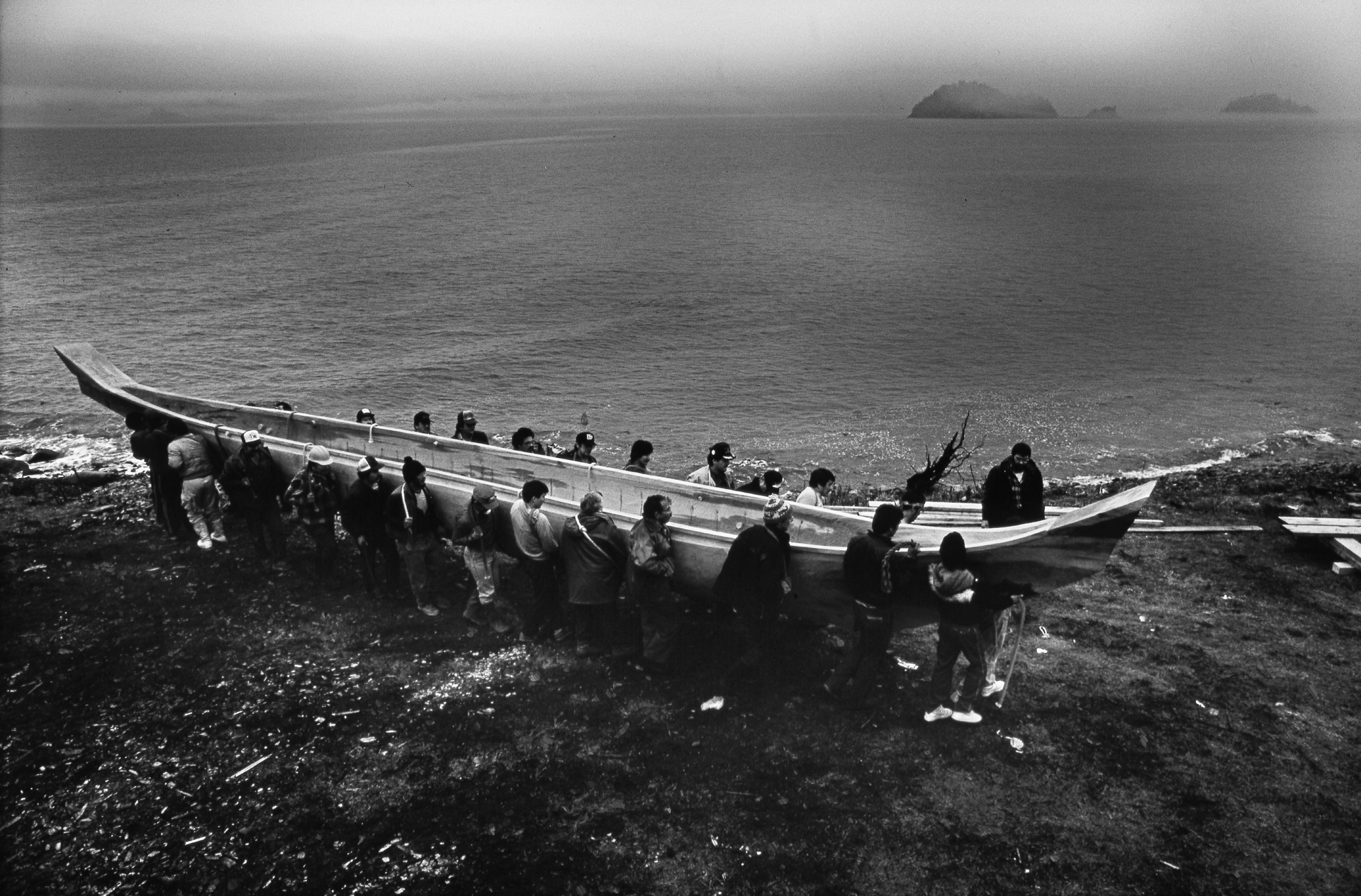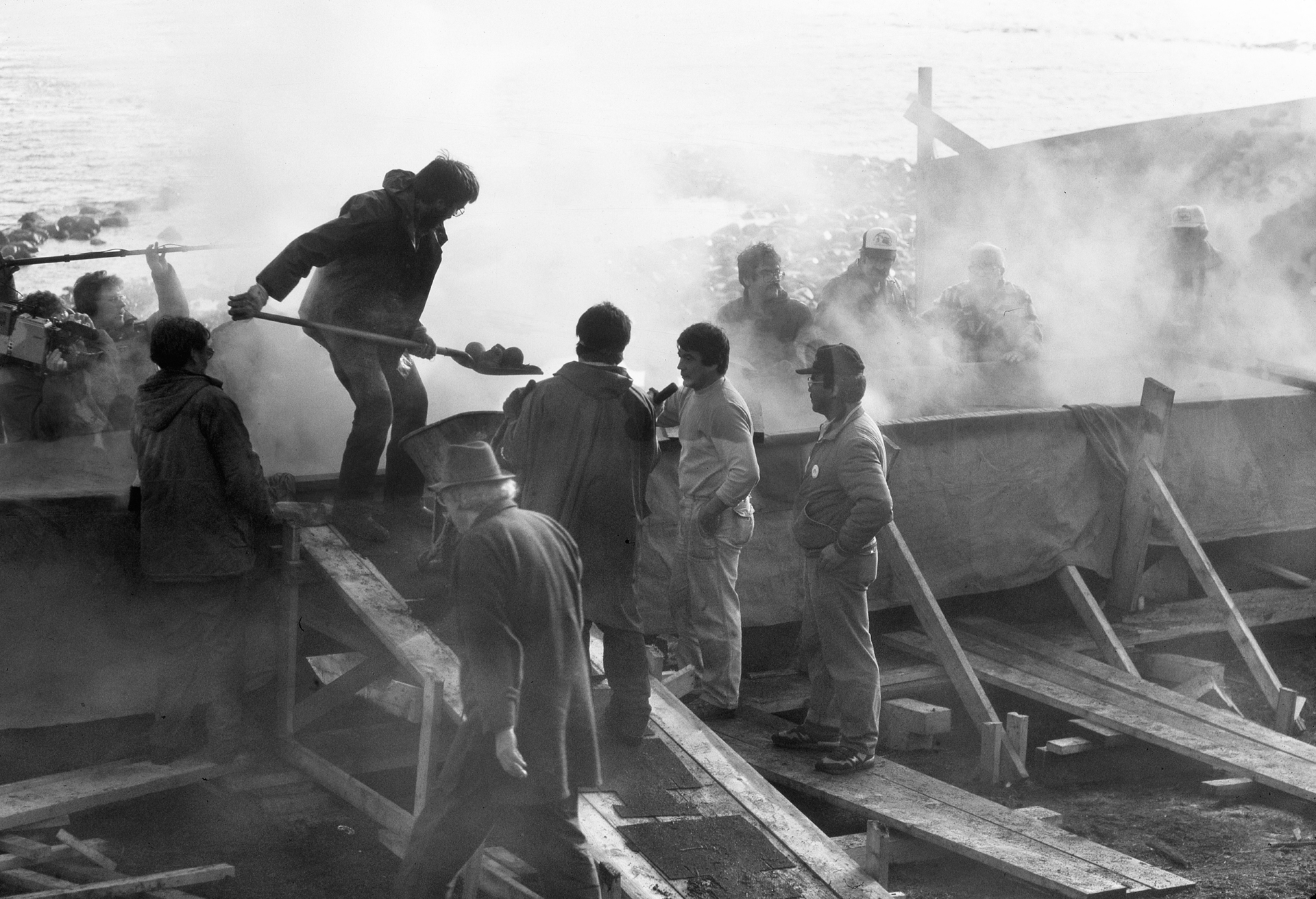0%

Bill Reid takes up the work. His Parkinson’s disease made his hands shake uncontrollably except when he was applying pressure on a chisel or a paint brush; then the shaking stopped. He was always busy with something, twisting wire in erotic shapes, working a piece of wood, sketching something, or marking up other’s work with his construction pencil.

Bill inspects and uses a small plane to level the gunwales.
I understand Bill when he says, “Happiness is a well-made object.” Out of all the focus and attention to detail, comes a kind of perfection that follows every chisel mark on the canoe, and that is incredibly rewarding for the carvers. It’s what keep carvers carving.

005. Bill Reid carves 50-foot-long Haida war canoe in a carving shed outside Skidigate, Haida Gwaii, B.C. Canada. This is the first Haida canoe of this sized carved in over 100 years. A jig frame holds the canoe to insure the right shape, uniformity, and thickness throughout the hull, inside and out.

There were some tricks to getting the ‘thickness’ uniform. Small holes were drilled at various locations along the hull. Pieces of soft lead soldering wire, cut to the exact lengths corresponding to the thickness required throughout the hull, where inserted flush in the drill holes from the outside. It was a good way to insure that carvers, working inside the hull, knew when to stop removing wood, when they hit the end of the soldier wire. Stacey, Jags, Brown and Bill inspect and measure.

A drummer chants for spirits to let the steam transform the carved log into a true canoe, balanced and stable. The canoe was blessed at every stage of its evolution; an enduring sign of the spiritual and community importance of the canoe. The canoe has always meant much more than transportation to the Haida.

Walking along the shores of Haida Gwaii, Bill would say that “ you have to be stupid to not survive here”. He was referring to the wealth of food and resources to be had in the temperate rainforests of the Pacific Northwest. Bill’s work fanned the flames of inspiration in a whole generation of Haida artists, canoe builders, and paddlers. But mostly Bill brought international eyes to Haida art, culture, and their land claim issues.
Bill’s ashes were transported in the Lootaas to Tanu, a most important historical Haida Gwaii village where his maternal grandmother is buried, and where his ashes lie among the mossy old totems, guarded by Haida Watchmen.

Today the original red cedar canoe rests in the Museum of Man in Paris. The second one is in Ottawa at the Museum of Civilization.
The Lootas has been paddled for thousands of kilometres, including to Alaska and up the Seine River to Paris. Paddling took off, and took with it energetic young men and woman who cared deeply for their culture.












